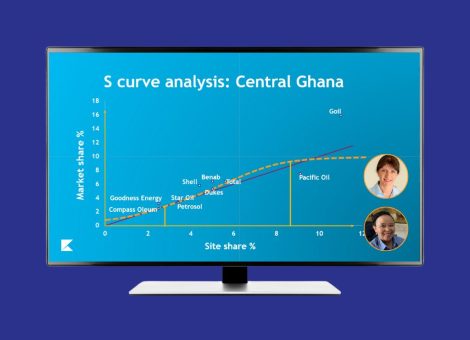How to overcome fuel price automation anxiety
Auto-implementation
noun
The process of automatically applying fuel prices to a product, product group, site, or network, that have been generated by a pricing software system.
For Fuel Pricing Analysts, the workload can be relentless. The process of analyzing, calculating, and applying prices is a never-ending story. Auto-implementation helps pricing teams to reduce their workload, allowing analysts to focus their time on the prices that really need human intervention.
The knowledge and expertise within your pricing team is an invaluable asset to your business. Using auto-implementation allows you to conserve brain power and utilize it where it’s really needed. More time means deeper analysis where it’s most useful.
Saving time is not only beneficial for your team — it can boost volume and margin performance too. Using auto-implementation allows you to get prices onto your poles and pumps earlier — so you can capitalize when it counts.
The key to auto-implementation
Conditions, rules, and validation are the key to auto-implementation.
It can’t replace human input and the brain power of your team — and it’s not trying to. Its job is to replicate those repeatable processes that your team do day in and day out, to take care of those standard pricing decisions so you can focus on the more complex cases.
To do this, you need to set the right validation rules. Prices won’t qualify for auto-implementation unless they’ve met all the conditions that you’ve set.
You need your pricing software tool to allow you to set the controls you require to generate appropriate prices. To establish these, work through the decision making process that your team would typically use, then create a set of robust conditions that will reflect that decision making process ― from delta to competitor strategies, to margin or decimal place adjustments, and everything in between. The conditions you set here will give you confidence that the final price will be appropriate and applicable.
You also need to set safeguards so you can be notified when something isn’t suitable for auto-implementation and needs human input. These notifications will alert you and your team to the exception cases — so you can look deeper into the elements of your pricing environment before you apply the price manually.
The ideal scenario for auto-implementation
You don’t need to use auto-implementation on every price across your entire network. You can choose to turn auto-implementation on for a particular product group or selected sites — and leave others to be applied manually. So how do you choose which sites’ or products’ prices should be auto implemented?
There are some really easy steps to let you know which of your sites are right for auto-implementation.
If you’re using Kalibrate Pricing, or any other fuel pricing software tool, you’ll be used to reviewing machine generated prices. The question on whether to use auto-implementation or not is: Are you consistently comfortable with the tools’ proposed prices?
You can run a report to see how often you apply the proposed prices and how often you are manually overwriting those prices.
If you’re regularly applying the proposed price, with no further calculation or manual input, then it’s the perfect candidate for auto-implementation. It’s what we call a “no brainer” — let the machine apply it. You’ll reach the exact same outcome, but you’ll have saved time and got prices to the pumps quicker.
So, what if you’re not comfortable with the prices generated?
The auto-implementation process was never designed to remove human input from pricing decisions entirely; there will always be some exception cases that need human brain power. You need to consider the level of manual pricing that’s feasible in relation to the resources you have in your team and the frequency of pricing activity in your markets. For some, this will be 80% automated / 20% manual, for others with large networks and multiple price changes each day it may be more like 98% automated / 2% manual.
If the report shows you’re pricing manually more often than you’re comfortable with, it’s time to review the pricing and validation rules you’ve applied within your pricing profile. Using the tool, you can review data to find out why the proposed price failed to auto implement and edit your pricing profiles to cater for those scenarios. With the right pricing profiles in place, every network can use auauto-implementation.
Kalibrate’s experienced Customer Success team can help you to analyze the data and suggest alternative rules and conditions to improve the percentage of prices that are accepted and reduce the level of manual input.
Remove repetition without losing sight of the detail
Some pricing managers like to have visibility of all prices across their networks. Thankfully, it’s still possible to have an overall view and understanding of your pricing ecosystem — without manually checking every one.
Beth Thompson, Kalibrate’s VP Global Customer Success, explains her favorite workspace set ups:
“Pricing teams still want to be able to see what’s going on with all of their markets— and rightly so — so we use workspaces to give them that insight, while still saving them time.
“One of my favorite workspaces gives me three different pieces of intel in one. I can see the range of prices at my sites, the ranges for the competition, and the density of those prices — at site level, area level, and the expanded network. So I can see really quickly where I’m positioned in relation to the competitive environment and whether there’s anything out of the ordinary that I should be looking into.”
Overcoming auto-implementation anxiety
Trusting a machine to take care of a task as important as fuel pricing doesn’t always come naturally. But, with the right pricing profile and validation rules in place, and the right intel at your fingertips, it can have a huge impact on the productivity of your pricing team.
Read more articles about:
Fuel pricingSubscribe and get the latest updates
You may unsubscribe from our mailing list at any time. To understand how and why we process your data, please see our Privacy & Cookies Policy
Related posts
Fuel pricing
Fuel pricing by exception: When do analysts actually analyze?
Managing fuel prices can be time-consuming, especially when analysts spend much of their day on routine tasks....

Fuel pricing
Middle East / Africa - Fuel network planning: Critical insights
Join our team as we look at the key points of insight that fuel network planners need to consider when making...

